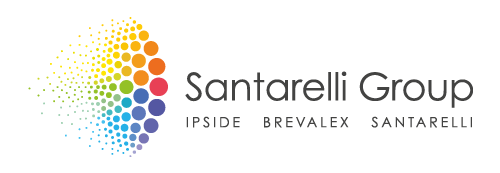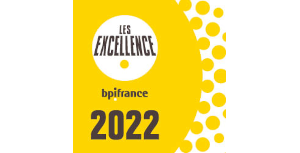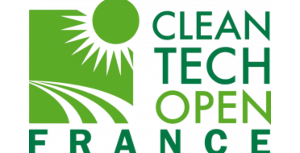Intellectual property applies to all fields of activity, and the viticultural sector naturally benefits from the advantages conferred by this right.
Indeed, the actors in the sector including vineyards, cooperages, bottlers, packaging designers, manufacturers of viticultural equipment or oenological products, interprofessional syndicates, designers of innovative products or solutions, oenologists, among others, are concerned by intellectual property law.
We will briefly see below the different rights that can be granted, noting that they can be cumulative.
Trademark Law
A trademark is a sign used to distinguish the products or services of a physical or legal person from those of other physical or legal persons. Its protection is indefinite, provided it is renewed every 10 years for the majority of Offices. In practice, many viticultural companies prioritize protection through trademark law to assert their identity. A trademark can take various forms such as a word or a combination of words, numbers, a label, a logo, a drawing, a 3D shape, a jingle...
Here are some examples of registered trademarks:
|
In verbal form |
MAESTRO to designate bottle caps |
|
In semi-figurative form |
to designate a label to designate a carafe to designate a box |
|
In three-dimensional form |
|
Moreover, trademark law has demonstrated its adaptability, particularly with regard to technological developments. Thus, those concerned with NFTs (Non-Fungible Tokens) and the Metaverse have been able to benefit from protection through trademark law. Not all signs are protectable, and Offices exercise strict control !
Not all signs are protectable and the Offices exercise strict control!
Article L.711-2 of the Intellectual Property Code notably stipulates: "Cannot be validly registered and, if registered, are liable to be declared null:
- A trademark lacking distinctive character;
- A trademark consisting exclusively of elements or indications that may serve to designate, in commerce, a characteristic of the product or service, and in particular the species, quality, quantity, destination, value, geographical origin, the time of production of the good or provision of the service;
- A trademark likely to deceive the public, particularly regarding the nature, quality or geographical origin of the product or service;
- A trademark excluded from registration under national legislation, European Union law or international agreements to which France or the Union are parties, which provide for the protection of appellations of origin and geographical indications, traditional terms for wines and guaranteed traditional specialties (Champagnola Case, C 783/19; "Champanillo" case (C-783/19); NewRhône Millésimes (Paris Court of Appeal of 26 May 2023)...)"
A trademark must also be legally available, meaning that it must not infringe the prior rights of third parties. It is therefore strongly advised to conduct an availability search before any deposit/use.
Registered Designs and Models Law
This law protects "the appearance of a product or part of a product, characterized in particular by its lines, contours, shape, texture or materials."[1].
Its maximum protection duration is 25 years (5 years renewable 5 times) at the French Offices and the European Union in particular.
The French and EU Offices do not examine these substantive conditions. Therefore, designs
and models are registered quickly and almost systematically if the design or model respects certain formal conditions.
For example, the following models have been registered by the French and/or European Union Offices:.
|
Corks |
|
Bottles and Carafes |
|
Wine fermentation vats |
|
Wine or liqueur glasses |
|
Aseptic bungs for wine tanks |
Any interested party can contest the validity of a design or model if it does not meet the substantive conditions, namely:
- Novelty, meaning no identical design or model differing only in insignificant details has been disclosed at the date of filing [2]
- Individual character, meaning the overall visual impression it produces on the informed observer differs from that produced by any design or model disclosed before the filing date.[3]
Any creation can also be protected under the unregistered Community design or model against any identical copy for a period of three years from its first disclosure within the European Union. In this case, it is advisable to collect indisputable evidence of the disclosure date
Copyright Law
Copyright arises from the creation itself, without the need for registration. It is governed by the criterion of originality, reflecting the creator's personality.
Here, protection is governed by the criterion of originality, which means "reflecting the creator's personality". This requirement benefits from a presumption.
By way of illustration, the Douai Court of Appeal accepted the copyright protection of a wine-tasting table. The table had a singular appearance that set it apart from other tasting tables, and its aesthetic appearance was not dictated exclusively by technical requirements.
Patent Law
A patent provides legal protection for a technical invention, i.e. a product or process that provides a new solution to a given problem.
The patent grants its holder a monopoly of exploitation for a maximum of 20 years, in the various territories concerned. Holding a valid patent prohibits any unauthorized exploitation of the invention. Should this not be the case, infringement proceedings can be brought to recover damages
Recommandations :
- Until the day of filing, absolute secrecy about the innovation must be maintained to meet the condition of novelty.
- The invention must be manufacturable and usable in any industry.
- Finally, the invention must involve an inventive step, meaning it should not be obviously derived from the technique known to a person skilled in the trade.
For example, BOUCHAGE DELAGE, specialized since 1941 in the production of corks for wines and spirits, was granted a European patent for a metallic closure device with an RFID component. The invention specifically relates to a closure device for a container like a cork, with a sealing body in its lower part and a head in its upper part, the head containing an RFID component in the form of an insert, an envelope with an external and internal surface, and a weight inside the envelope.
"Do not hesitate to contact us. We are at your disposal to answer any questions you may have about these issues regarding the protection of your intellectual property rights."
|
This email address is being protected from spambots. You need JavaScript enabled to view it. |
This email address is being protected from spambots. You need JavaScript enabled to view it. |
[1] Article L511-1 - Code de la propriété intellectuelle
[2] Article L511-3 - Code de la propriété intellectuelle
[3] Article L511-4 - Code de la propriété intellectuelle













